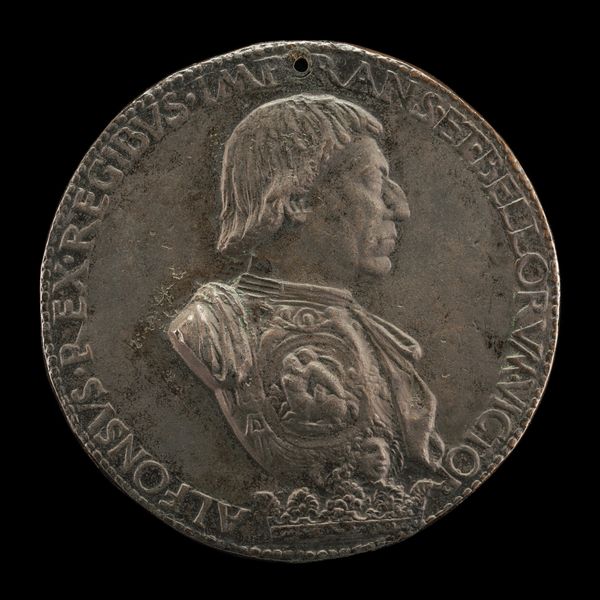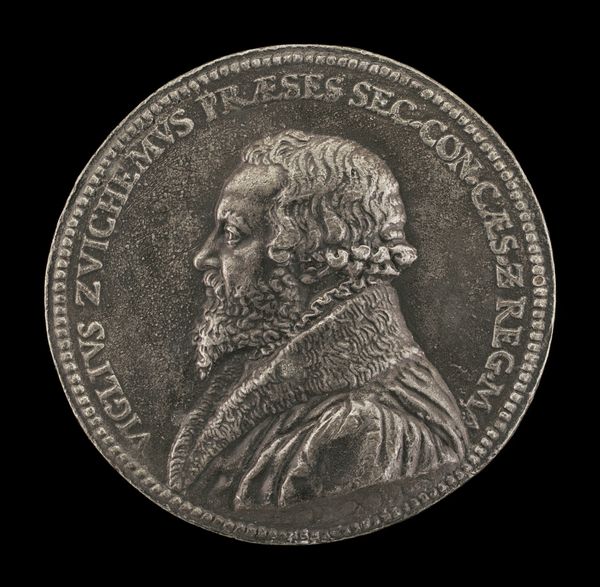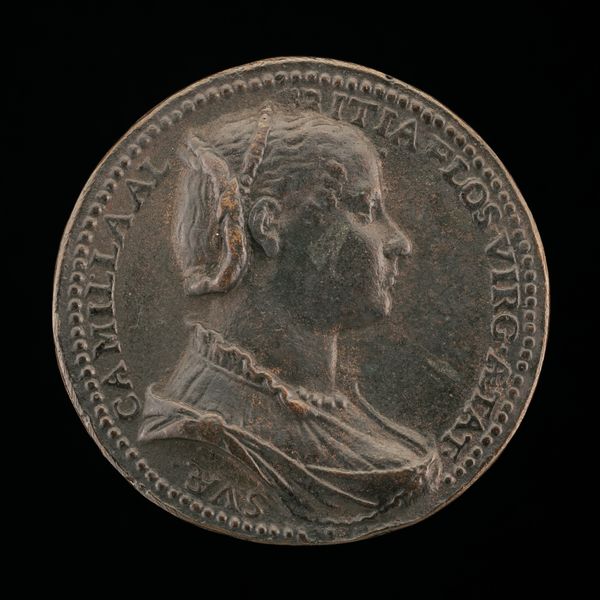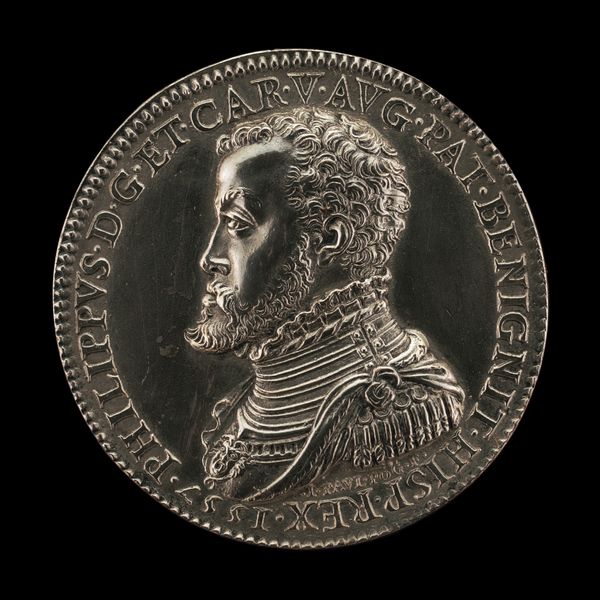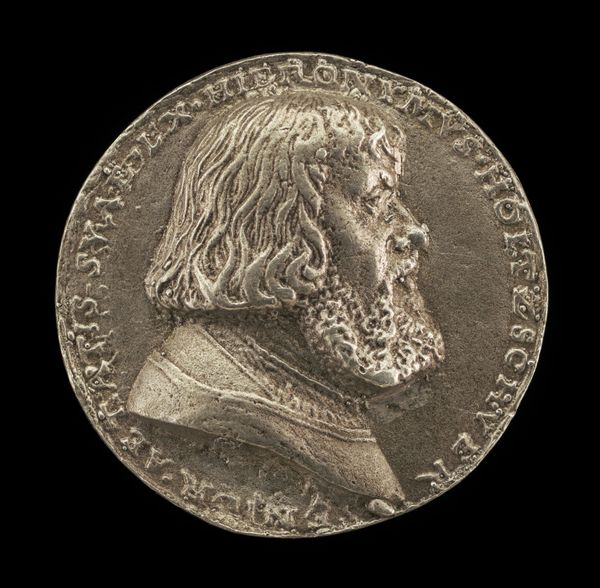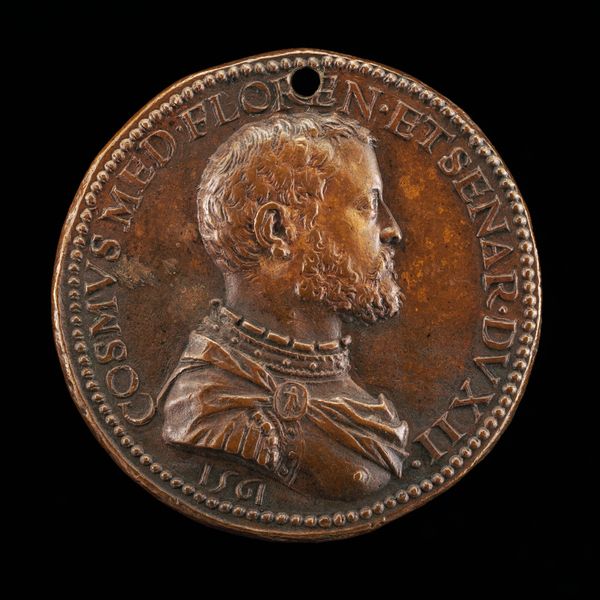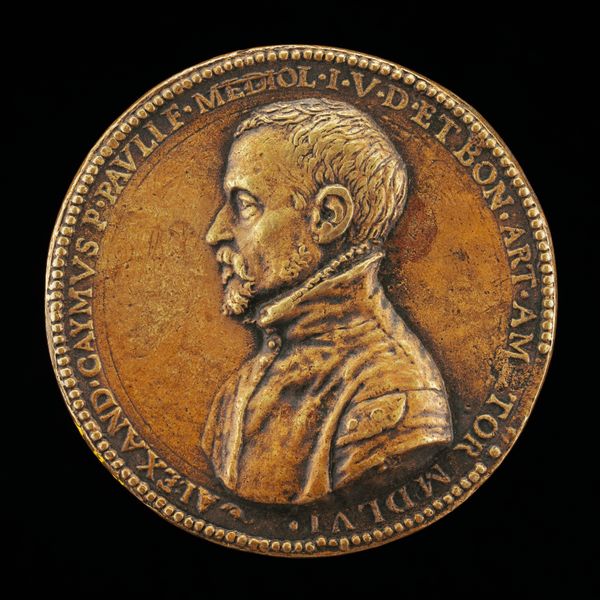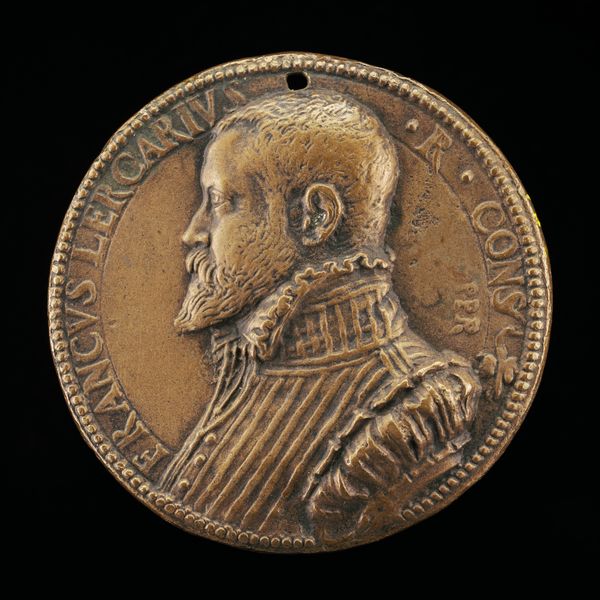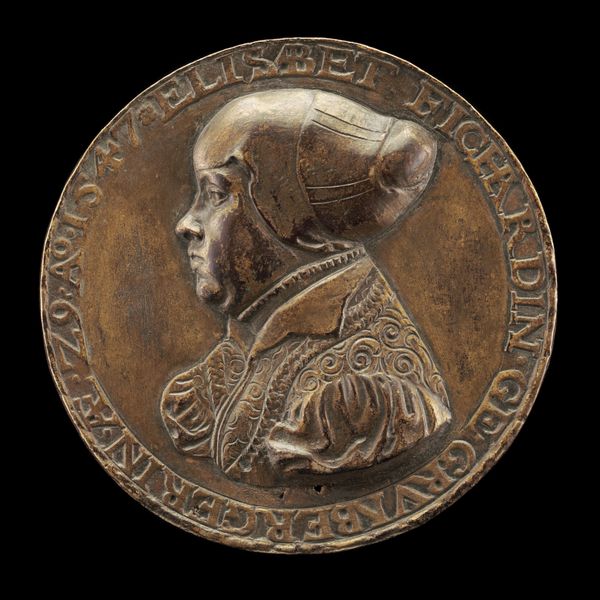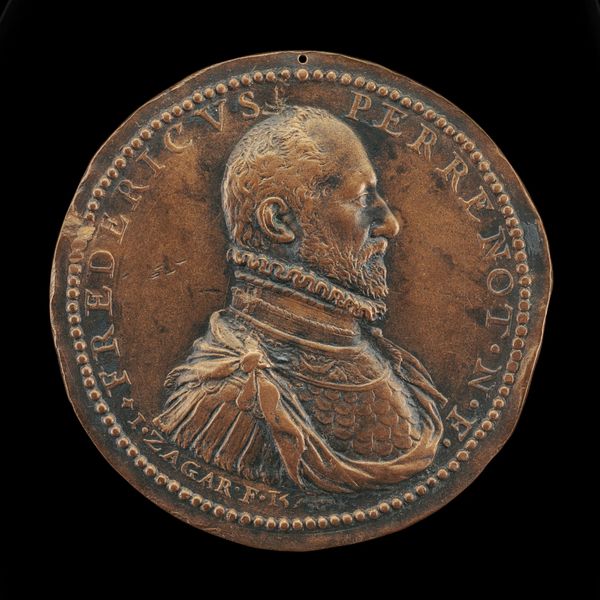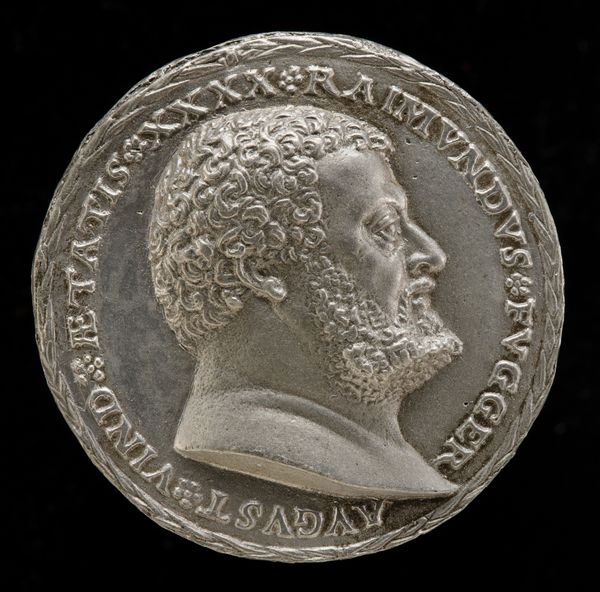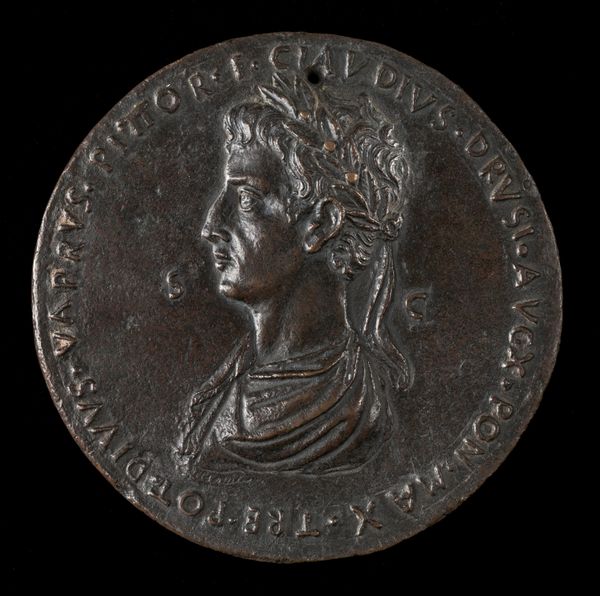![Guido Rangoni, 1485-1539, Lord of Spilimberto [obverse] by Antonio Vicentino](/_next/image?url=https%3A%2F%2Fd2w8kbdekdi1gv.cloudfront.net%2FeyJidWNrZXQiOiAiYXJ0ZXJhLWltYWdlcy1idWNrZXQiLCAia2V5IjogImFydHdvcmtzLzY1MjRhZmE2LTk4N2MtNDU5Yi1iMDQ2LWZiM2M1OTNmZWJjOC82NTI0YWZhNi05ODdjLTQ1OWItYjA0Ni1mYjNjNTkzZmViYzhfZnVsbC5qcGciLCAiZWRpdHMiOiB7InJlc2l6ZSI6IHsid2lkdGgiOiAxOTIwLCAiaGVpZ2h0IjogMTkyMCwgImZpdCI6ICJpbnNpZGUifX19&w=3840&q=75)
Guido Rangoni, 1485-1539, Lord of Spilimberto [obverse] c. 1525 - 1530
0:00
0:00
metal, relief, bronze, sculpture
#
portrait
#
medal
#
3d sculpting
#
metal
#
sculpture
#
relief
#
bronze
#
sculpture
#
italian-renaissance
Dimensions: overall (diameter): 6.82 cm (2 11/16 in.) gross weight: 147.47 gr (0.325 lb.) axis: 12:00
Copyright: National Gallery of Art: CC0 1.0
Editor: Here we have a bronze medal made by Antonio Vicentino around 1525-1530. It depicts Guido Rangoni, a Lord of Spilimberto. The level of detail is remarkable for such a small object. What strikes me most is the stern expression, a bit melancholic, and the crisp rendering of the armor. How do you interpret the symbolism within this piece? Curator: Indeed, it’s more than just a portrait. The Renaissance medal carries powerful symbolic weight, functioning as a miniature monument, a personal emblem designed for circulation among select individuals. Notice the inscription encircling Rangoni. Editor: Yes, it's a bit difficult to read, but it's definitely there! Curator: Precisely! These inscriptions were carefully chosen, offering clues to the sitter's aspirations, virtues, or allegiances. Consider the armor itself. Does it solely represent Rangoni's status as a leader or could it signify something more, perhaps a connection to classical ideals of military prowess and civic duty? What feelings does this object evoke for you? Editor: I hadn’t thought about the classical connection, but it makes perfect sense! The armor now seems less about brute force and more about… responsibility, maybe? It definitely elevates the object beyond a simple commemorative piece. Curator: Absolutely. And consider the enduring power of the portrait. Faces, even sculpted ones, act as focal points for memory. We project onto them our understanding of history, of the subject's character, influenced by cultural narratives and even our own biases. Does knowing more about its historical purpose affect your initial feeling of melancholic introspection? Editor: Yes, somewhat. The melancholy is still there, but now it feels more like a reflection of the weight of leadership, the burdens of responsibility that you mentioned. I didn't consider it being such a layered object, originally. Curator: And that is the magic of diving deep into art, isn't it? We began with surface impressions and have moved into layers of understanding, both personal and historical.
Comments
No comments
Be the first to comment and join the conversation on the ultimate creative platform.

